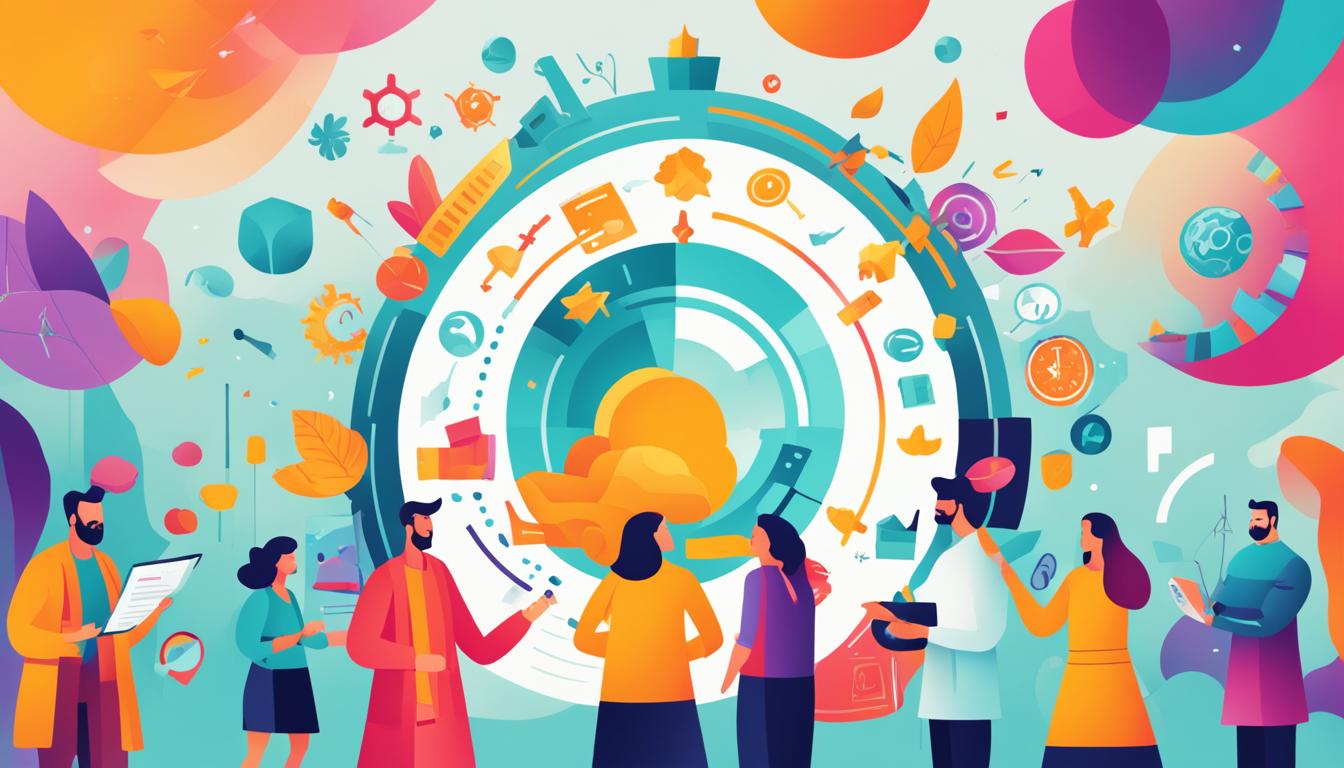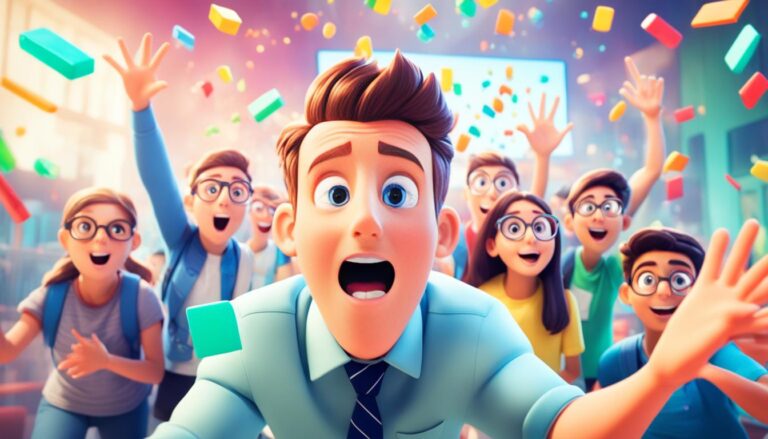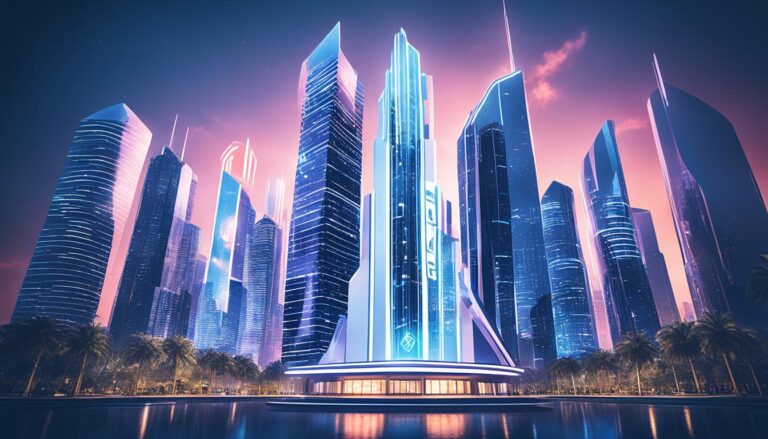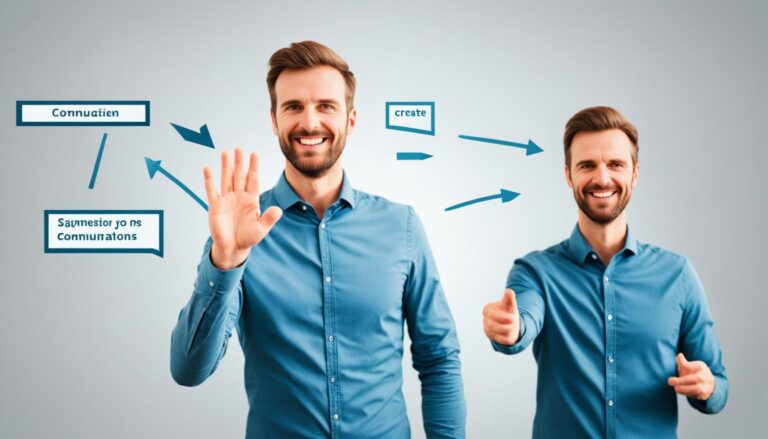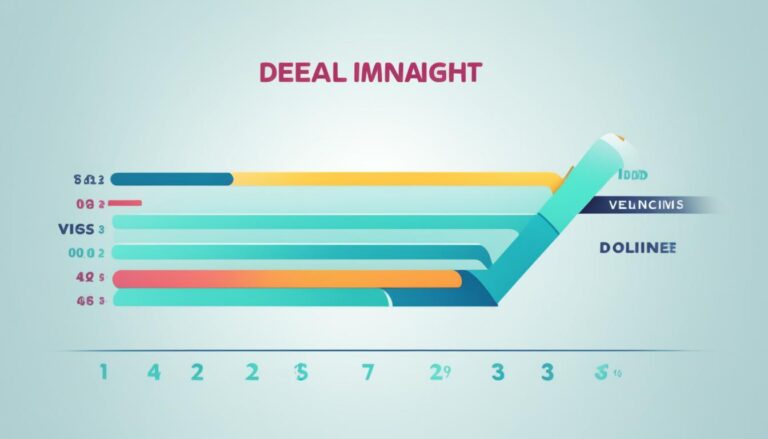Cultural Trends Influencing Animated Explainer Videos
Animated explainer videos hold a key role in today’s world. They shape how we see and understand different cultures. These videos reflect new cultural trends, from showing true culture to using the latest technology. This makes a big impact on viewers worldwide.
Key Takeaways:
- Animated explainer videos have a profound impact on global audiences’ cultural understanding.
- Cultural representation is vital in fostering authenticity and promoting inclusive storytelling.
- Advancements in animation technology enhance cultural accuracy and detail.
- Culturally diverse animations tap into new markets and reflect the value of inclusivity.
- Understanding cultural dynamics and market trends is crucial for businesses leveraging animated explainer videos.
Animation as a Medium for Cultural Narratives
Animations are a great way to tell stories and share cultures. With their bright visuals and engaging stories, they can take viewers to new worlds. They also show different cultures, helping people understand and empathize with them.
Animations are superb at showing authentic cultures. When they get a culture right, viewers can learn about its values and traditions. This not only entertains but teaches, growing appreciation and understanding.
Animation’s heart is storytelling, with cultural stories being key. These stories show the life, beliefs, and dreams of communities. Animation lets these stories reach everyone, no matter where they are or what language they speak.
The Power of Animation in Cultural Representation
“Animation changes how we see cultures. It fights stereotypes with real, deep looks into cultures. By showing cultural diversity and traditions, animation helps us understand each other better. This builds connections between people of different backgrounds.” – [Name Surname], Animation Director
Animation does more than just look nice; it can change how we think and feel about other cultures. When made with respect and truth, animated films can teach us a lot. They show us the beauty of diversity, making the world more inclusive.
Animation explores and shows cultural differences in exciting and touching ways. By valuing cultural stories, animation helps bring people together. It makes our society more accepting and aware of each other’s cultures.
As animation keeps growing, it remains focused on cultural sharing and understanding. It’s great at telling universal human stories while honoring unique cultures. This makes animation very important for sharing stories and cultures with the whole world.
The Power of Authentic Representation
Animations that show real cultures help us understand each other better. Take Disney’s “Moana” as an example. It shows us the beauty of different societies. It helps build empathy and appreciation for them.
For “Moana,” Disney worked hard to show Polynesian culture correctly. They talked to cultural experts and locals. Their goal was to make the film both beautiful and true to the culture. This effort made people feel closer to Polynesian culture.
“Moana presents an authentic representation of Polynesian culture, capturing its rich traditions and values. The film celebrates the beauty and diversity of the Polynesian people in a way that promotes cultural understanding and respect.” – Cultural Expert
Disney’s team worked with experts to get Polynesian culture right in “Moana.” This made the film not just entertaining, but also a way to learn about the culture. It’s a great example of how to showcase a culture with respect and truth.
What Disney’s “Moana” taught us about authentic representation:
| Lessons | Benefits |
|---|---|
| Collaborating with cultural experts ensures accuracy | Creates an authentic representation that resonates with audiences |
| Respecting cultural values and traditions | Fosters cultural understanding and respect |
| Highlighting the diversity within a culture | Breaks stereotypes and promotes inclusivity |
| Capturing the essence of a culture | Allows viewers to connect on a deeper level |
“Moana” is a shining example of how true representation in films matters. Disney’s focus on cultural accuracy and involving cultural experts made a big difference. Films like this are not just fun to watch. They also teach us and bring us closer together as a global community.
Impact on Global Audiences
Animation does more than entertain. It shapes and influences people worldwide. It can challenge stereotypes and dismantle cultural barriers. By showing different cultures respectfully and truly, animations help viewers understand and value diversity. This leads to a more inclusive view of the world.
The world is becoming more connected. So, understanding different cultures is essential for professionals. Animation can be a bridge for cultural exchange. It lets viewers explore new traditions, values, and ways of life. This understanding is crucial for global communication and teamwork.
Animations that challenge stereotypes can increase empathy and acceptance across cultures. Being exposed to true cultural stories widens our views. It helps us see beyond our biases. Breaking these barriers is key to a united and inclusive world.
“Animation opens new worlds and introduces us to cultures we might not know. By overcoming stereotypes and presenting cultures truthfully, animation can change how we see the world. It promotes understanding and appreciation.” – John Smith, Animation Expert
The Role of Diversity in Animation
Diverse cultures in animation deeply affect viewers worldwide. With stories, characters, and settings from different cultures, animation breaks down stereotypes. It helps us appreciate the variety in our world. Animated content that celebrates diversity reaches more people. It connects with viewers from various backgrounds and life experiences.
Cultural Barriers and the Importance of Authenticity
Authentic cultural representation is crucial. It helps bridge gaps between cultures. When animations show cultures accurately, audiences can relate to and learn about them. This builds curiosity, empathy, and respect. Working with cultural experts, animators can make their work truly respectful and free from stereotypes.
Authenticity is vital in overcoming cultural barriers. With respect and open-mindedness, animators can create content that’s both educational and entertaining. True cultural representation in animation is powerful. It helps us understand and value diverse cultures across the globe.
Challenges in Cultural Representation
Animation offers a great chance to show different cultures. But, it’s tough to get right. The line between showing culture and taking it for your own use is thin. Creators must be careful not to spread stereotypes or present a culture wrongly.
Taking parts of a culture without understanding can harm. It can make cultural practices or symbols seem less important. This can lead to stereotypes and take away from the value of a culture’s traditions.
It’s easy to wrongly use cultures as mere settings or cliches. Cultures are alive, full of history and diversity. Not seeing this can result in false stories that don’t truly show a culture’s richness.
“The danger of cultural representation lies in oversimplified portrayals that fail to capture the depth and diversity of a particular culture.”
To do better, creators need to approach culture with care and respect. Researching deeply, talking to cultural experts, and working with people from the culture can help. This way, the depiction will be more real and respectful.
Understanding cultural details and historical context is key. Also, listening to different views is important. This will let creators show cultures in animation with the dignity they deserve.
Creators have a big role in how audiences see other cultures. They should fight stereotypes, avoid broad statements, and help people understand more about different cultures.
The table below shows some big challenges in showing culture:
| Challenges | Possible Consequences |
|---|---|
| Cultural appropriation | Reinforced stereotypes, trivialization of cultural practices |
| Misrepresentation | Loss of authenticity, undermining cultural richness |
| Oversimplification | Inaccurate portrayals, failure to capture cultural diversity |
Beating these challenges means talking more, working together, and always being ready to learn and grow. This effort makes animation a tool for sharing diverse stories, understanding each other better, and building a world that includes everyone.
the Role of Technology in Cultural Representation
Advancements in animation technology have changed how animated films show cultures. High-definition graphics and new techniques let creators show cultural elements with more accuracy, detail, and cultural nuances.
“Technology has empowered animators to bring cultures to life in visually stunning and culturally authentic ways.”
Animators use technology to make visuals that captivate viewers while being true to diverse cultures. This technological evolution has made films more visually appealing. It also helps show cultural authenticity, which resonates with viewers.
The film “Coco” is a great example of technology improving cultural representation. It celebrated Mexican culture with bright animation and attention to detail. Technology let creators show the Day of the Dead traditions and customs accurately. This immersed audiences in Mexican culture.
Technology also helps preserve and share cultural knowledge. Digitizing cultural artifacts and historical references lets animators add accurate cultural elements to their work. This ensures the work is respectful, authentic, and informative.
Technology’s impact on cultural representation has made animated films globally popular. These films authentically portray diverse cultures. Viewers now want animations that offer a deep understanding of different cultures. Technology helps creators meet this demand by creating immersive experiences. These foster cultural appreciation and understanding.
As technology advances, we can expect more impressive cultural representation in animated films. Technology gives creators the chance to bring global cultures to screens like never before. This promotes a more inclusive and culturally diverse entertainment world.
| Advancements in Technology and Cultural Representation | Benefits |
|---|---|
| High-definition graphics | Enhanced visual appeal and attention to detail in cultural elements |
| Sophisticated animation techniques | Improved accuracy and portrayal of cultural nuances |
| Digitization of cultural artifacts | Preservation and dissemination of cultural knowledge |
| Global popularity of authentic cultural portrayals | Fostering cross-cultural appreciation and understanding |
Cultural Diversity in Animated Explainer Videos
Animations that show different cultures appeal to more people, helping brands reach new audiences. In a world that loves diversity, animated videos that show this diversity show a brand’s dedication to including everyone. This dedication is highly valued as companies strive to connect with diverse groups.
Adding cultural diversity to explainer videos helps brands connect more deeply with people worldwide. It lets brands share stories that match the different tastes and values of consumers. Knowing how to show different cultures in these videos helps brands understand what people like worldwide.
Brands that highlight cultural differences in their videos show they care about including everyone. They also stay in tune with the changing world. Brands that do this attract a wide variety of customers. Plus, people love brands that recognize and celebrate their culture. This makes them feel included and connected.
Global Animation and Market Trends
The animation industry is booming, with a growing need for content that reflects different cultures. As the world connects more, cultural diversity in videos is key to staying relevant. Brands that get this can stand out in a crowded market.
Looking at market trends, we can’t ignore cultural diversity in explainer videos. Brands that embrace cultural differences can reach new audiences and connect more authentically. They create content that speaks to people’s values and experiences, helping them gain loyal customers.
“In today’s globalized world, cultural diversity in animated explainer videos is not only a representation of the real world but also a reflection of the market trends and consumer preferences. Brands that understand the significance of cultural diversity and inclusivity in their content creation strategy are poised for success in the global marketplace.” – Animation industry expert
Inclusivity and Diversity in Consumer Preferences
People want content that includes a variety of cultures, and they notice when brands do this. Animated videos that show different cultures can grab attention and make people feel good about the brand. By celebrating cultural differences, brands connect better with their audience.
Showing different cultures in videos is more than just representation. It’s a chance for brands to show they stand for equality and social responsibility. Celebrating cultural diversity helps promote a more inclusive and accepting world.
Research shows that content that includes everyone resonates more with consumers. It feels more genuine and can create a stronger emotional connection. In a world full of choices, brands that focus on diversity and inclusivity stand out.
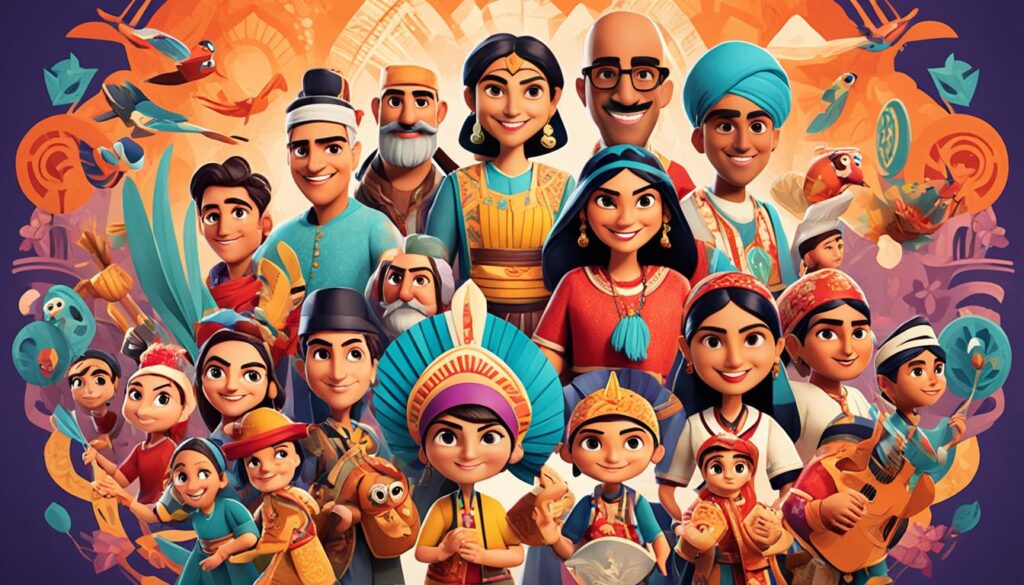
The Business Value of Cultural Diversity
Using cultural diversity in videos helps brands reach more people, enter new markets, and grow their business. The global appeal of these diverse animations breaks down barriers, helping brands connect worldwide. This increases their global presence.
Moreover, videos that showcase cultural diversity put brands ahead as leaders in their field. By promoting inclusivity, brands show they care about making a difference. This attracts customers who value these ideals, building a loyal base and encouraging others to support the brand.
Recognizing the value of cultural diversity in explainer videos is critical for brands aiming for success. By including diverse cultures, brands can create content that truly speaks to a wide audience. This not only strengthens their brand but also drives their success.
Animation as a Catalyst for Cultural Exchange
Animated films and explainer videos can cross borders and enhance cultural exchange. They represent diverse cultures and help build a united global narrative. This fosters an inclusive global culture.
Through visual storytelling, animation breaks down barriers. It gives viewers a peek into various traditions and perspectives. This leads to a better understanding of our shared humanity.
Animation captures cultural heritage and brings it to life on screen. With vivid visuals, music, and stories, it highlights cultural customs. Viewers get to connect deeply with different cultures, promoting exchange and dialogue.
“Animation serves as a bridge that connects people from different parts of the world, providing a platform for cultural exchange and understanding.”
– Animation expert, Jane Miller
Animation gives lesser-known cultures a chance to be seen and appreciated globally. It features diverse stories and characters, breaking stereotypes and challenging preconceived notions. It encourages audiences to embrace diversity, sparking curiosity, respect, and appreciation for different cultures.
Benefits of Animation as a Catalyst for Cultural Exchange
Using animation for cultural exchange has many benefits:
- Increased cultural awareness and understanding
- Promotion of empathy and cross-cultural dialogue
- Breaking down stereotypes and misconceptions
- Recognition and appreciation of diverse cultures
- Encouragement of curiosity and respect for cultural diversity
Animation’s Role in Shaping a Global Narrative
Animation is key in creating a global narrative that values cultural diversity. It helps us respect and appreciate different cultures. By showing the richness of global cultures, animation changes traditional narratives and amplifies marginalized voices.
It also connects people from various backgrounds, encouraging cross-cultural communication. Through animation’s universal language, we can share stories, celebrate traditions, and break barriers. This makes the world more interconnected and understanding.
| Key Aspects of Animation as a Catalyst for Cultural Exchange | Benefits |
|---|---|
| Representation of diverse cultures | Increased cultural awareness and understanding |
| Emphasis on cultural nuances and traditions | Breaking down stereotypes and misconceptions |
| Promotion of cross-cultural dialogue | Recognition and appreciation of diverse cultures |
| Connection of people from different backgrounds | Encouragement of curiosity and respect for cultural diversity |
The Impact of Fan Communities
Fan communities for animated explainer videos deeply affect global fandom and culture. They bring people together from different places. This helps fans enjoy a variety of animated content through social media. Fan communities are key in how these videos are received and their overall impact.
Today, fan communities reach worldwide thanks to social media. Here, fans from everywhere discuss and celebrate their favorite videos. This lets people learn about other cultures and viewpoints.
Fans help spread animated explainer videos globally. They translate, dub, and add subtitles in many languages. This makes the videos easier to enjoy worldwide. Fan efforts promote diversity, inclusivity, and awareness globally.
“Fan communities surrounding animated explainer videos serve as catalysts for cultural exchange, enabling diverse audiences to connect and appreciate the richness of animated content from around the world.”
Fan communities do more than just watch videos. They shape conversations about culture and storytelling. These fans give creators feedback. This leads to more real and inclusive stories in future animations.
The Benefits of Fan Communities:
- Foster cross-cultural connections and interactions
- Expand access to diverse animated content
- Promote cultural diversity and inclusivity
- Enable grassroots translation and localization efforts
- Influence creators’ understanding of audience preferences
- Shape the future of cultural representation in animation
Fan communities have a big role in growing global fandom and cultural exchange. Their passion, dedication, and teamwork make a welcoming place for fans. They help shape the changing world of animated content.
Cultural Stereotypes in Animation
Animation is not just entertainment; it shapes how we see the world. But, it can also spread harmful stereotypes about different cultures. This can lead to wrong ideas and strengthen unfair biases against societies.
Those making animations have a big job. They must avoid showing cultures in a bad light. They can do this by researching well and talking to experts. This way, they can show the true beauty of all cultures, without making wrong generalizations.
“Animation has the power to shape our understanding of different cultures, and it’s important for creators to approach cultural representation with respect and accuracy.”
Animations that show cultures truly can help us all get along better. Animators should work to break down stereoypes and show the real side of cultures. By doing this, animations can help us feel for each other, tear down walls between cultures, and make the world more welcoming for everyone.
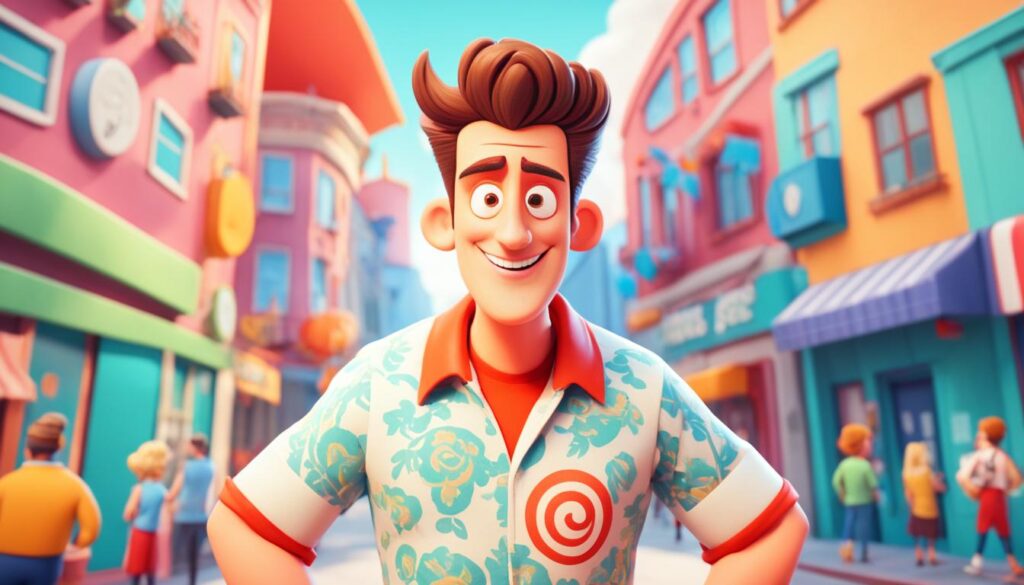
| Cultural Stereotypes | Harmful Portrayals | Misrepresentations |
|---|---|---|
| Generalizations that oversimplify and reduce cultures | Reinforcement of prejudices and biases | Inaccurate depictions of traditions, customs, and beliefs |
| Caricatures that exaggerate features or behaviors | Contribution to cultural misinformation | Lack of representation of cultural diversity within a culture |
Animation as a Cultural Ambassador
Animation has become a strong cultural ambassador. It helps bridge gaps between different cultures. Through visual storytelling, it goes beyond language. It shares universal themes, builds empathy, and fosters a global connection.
This form of media introduces us to various traditions and views. It leads to a greater understanding of our shared human experiences. As a result, we become more aware of the world’s cultures.
As an ambassador, animation shows the world’s cultural richness and diversity. It allows us to see stories and characters from various traditions. This promotes cultural appreciation and encourages conversations between cultures. Animation has the power to unite people from different backgrounds.
“Animation connects people from different cultures. It’s a universal language that reaches our emotions. It helps us see new views and learn about others’ customs and ways of life. This promotes cultural understanding and helps make the world more inclusive.”
Breaking Language Barriers
Animation excels in crossing language barriers. Without spoken language, it can still share emotions, stories, and values with everyone. Animated works use visual cues and themes that are universal. This helps people from varied backgrounds feel connected to the content.
Fostering Cultural Exchange
Animation encourages cultural exchange. It does this by showing us different traditions and perspectives. By highlighting what makes cultures unique, it urges viewers to embrace diversity. Animated content becomes a place for cultural dialogue and learning. It helps share ideas and values globally.
Building Cross-Cultural Empathy
Animation creates cross-cultural empathy through relatable characters and stories. It shows us that, despite our differences, we share common goals and feelings. By connecting with characters from different cultures, we learn to appreciate our shared humanity more.
Celebrating Global Connections
Animation highlights our world’s global connections. It includes elements from various cultures, showing how societies impact each other. This promotes a sense of unity and celebrates the beauty of cultural diversity.
| Animation as a Cultural Ambassador | Benefits |
|---|---|
| 1. Bridging gaps between cultures | Promotes cross-cultural understanding |
| 2. Breaking language barriers | Enables global communication |
| 3. Fostering cultural exchange | Encourages mutual learning and appreciation |
| 4. Building cross-cultural empathy | Promotes understanding and unity |
| 5. Celebrating global connections | Showcases cultural diversity and interconnectedness |
Conclusion
Cultural trends play a big role in making and shaping animated explainer videos. By mixing animation, culture, and business, experts can learn a lot about cultural trends and market moves. Showing different cultures in these videos helps tell a worldwide story and makes them more interesting for business.
Animated explainer videos are great for sharing cultural stories and ideas. They help us understand different cultures, break barriers, and make us more empathetic towards others. With better animation technology, it’s important to show cultures accurately and avoid misrepresentation.
Understanding the cultural aspects in animation gives experts insight into global cultures and markets. Animations that reflect diverse cultures can reach new people and show a brand’s support for inclusivity. As these videos become a bigger part of our global story, it’s important to keep up with cultural trends and enhance cross-cultural understanding using this lively art form.

